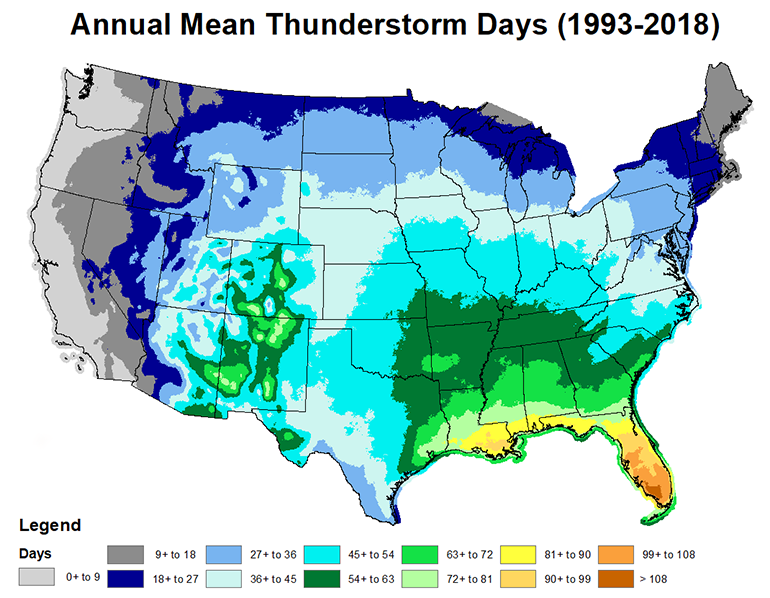At any given moment, there are thousands of thunderstorms occurring worldwide.
Most of these storms are beneficial, bringing needed rainfall. A small percentage of the storms become severe, producing large hail (1"/2.5 cm in diameter or larger), strong wind gusts of 58 mph (93 km/h) or greater, or tornadoes.
Although the area stretching from Texas to Minnesota has the greatest known occurrences of U.S. severe thunderstorms, no place in the United States is immune to the threat of severe weather.

Part of the fascination many people have with thunderstorms is the mystery that surrounds them. Leading researchers are still learning about many of the phenomena associated with thunderstorms.
In order to understand thunderstorm-related spectacles like tornadoes, lightning, and hail you must have a basic knowledge of thunderstorm characteristics.
In the 1950's and 1960's, there were three types of convective watches that could be issued: Tornado Watches, Public Severe Thunderstorm Watches, and Aviation Severe Thunderstorm Watches.
At first, the public severe thunderstorm watch wind criterion was 75 mph (120 km/h), while the limit for aviation watches was 50 mph (43 knots / 80 km/h). Negotiations with the Air Force raised the minimum speed required for an aviation watch to 58 mph (50 knots / 93 km/h) in 1962.
In 1970, the Aviation Severe Thunderstorm and Public Severe Thunderstorm watches were combined into a single Severe Thunderstorm Watch, with a minimum wind gust criterion of 50 knots, to reduce confusion, which is 58 mph (93 km/h).